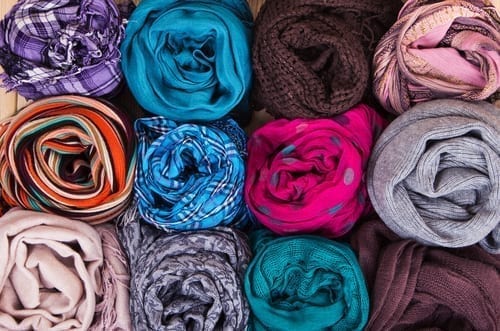To Judaism’s way of thinking, one definitely should feel “inhibited” about displaying oneself as a body, and a married woman should feel even more “inhibited” about broadcasting a sensual or undignified message. Yet some people fear that educating children to dress modestly may leave them feeling altogether ashamed of their bodies. Surely, parents yelling, “Ugh! That’s disgusting! Get out of here and don’t come back until you’ve got clothes on!” could bring about this unfortunate result. Yet I’ve found that if one talks to children sensitively, the true message of tzniut (modesty) isn’t hard to get across.
One day, I visited the home of a good friend at her children’s bath time. Unbeknownst to his parents, one of her freshly washed little boys had taken a perch on the kitchen windowsill, where he was quite uninhibitedly sunning himself.
“Hey, Dovi,” I greeted him with a smile, “you have a beautiful little bottom there, but I think you should put something on it.”
He looked at me innocently. “If it’s so beautiful,” he asked, “why do I have to cover it up?”
Hmm, I thought — if I didn’t know better, I’d think this precocious preschooler subscribes to the “if you’ve got it, flaunt it” theory. By way of reply, I treated him to a brief, age-appropriate discourse on tzniut. The gist of it was: You have not only a body but also a neshamah (soul), and when you cover your body, it’s easier to see your neshamah. Or, in other words, “Because no matter how cute your bottom is, you’re more than a bottom.” And the message was heard — with no negative repercussions on a healthy child’s body image.
While tzniut, like anything else, is best digested when fed to us from childhood with our milk and cookies, we can, with deliberate effort, assimilate it later in life. In this case, even a small event can be the catalyst.
I know a woman named Shari who has always been into the “natural look,” disliking both the vanity and the deception she feels using makeup. One day she was visiting her married, religious friend Debbie when, in the middle of their conversation, the latter took out her cosmetic case.
“I just want to put on some mascara and blush,” Debbie explained, “because my husband will be home soon. He appreciates it when I look my best for him.”
“Doesn’t it bother you,” Shari challenged her, “that what your husband appreciates isn’t your real face?”
“No,” Debbie responded calmly. “He knows I’m wearing makeup. But let me ask you something: what if he didn’t? What if he went through his whole life believing this is how I really look? Would it matter?”
Shari was dumbfounded. “Of course it would matter!” she exclaimed. “Don’t you want to be loved for who you are?”
Debbie smiled. “With or without makeup,” she said gently, “my looks are not who I am.”
Suddenly Shari realized that her friend’s use of makeup was dictated not by any emotional involvement with her appearance, but by simple pragmatism — her husband liked it, so she wore it. In taking an ideological stance against makeup, it was ironically she herself who was more attached to her looks. While Shari still prefers to be “natural,” the process of self-examination which this small experience initiated took her self-image to a deeper place.
For some people, this awakening is brought about by a minor trauma. For instance, someone I know once underwent orthodontic surgery which shortened his jaw. Confronting a different-shaped face in the mirror several days later, on a person he knew full well was still he, drove home the realization of where his true self lay. Even more dramatic is the example of burn victims and others whose appearances were very radically changed. Nothing can propel a person more strongly to seek his or her true identity than having the source of a false one taken away.
Aging is the process of change which affords us all the opportunity to come to terms with who we are. Many of us, however, instead react with panic. A man approaching fifty will have a mid-life crisis, divorce his wife of twenty-five years, and marry someone his daughter’s age in a desperate attempt to regain his youth. A woman will adopt the militant stance of the Oil of Olay ad (“I don’t intend to age gracefully — I intend to fight it every step of the way”) and subject herself to face-lift after face-lift. Both fail to see the point about aging: that it’s a blessing in disguise, in encouraging us to wean ourselves from identifying with our faces and bodies in preparation for the next life, in which we will only be souls. And a person who recognizes this can always be beautiful — for he or she will know that for beauty to endure, it must emanate from within.
Young or old, the key to happiness is simply knowing what makes us who we are.
One morning, I entered my children’s bedroom to get them up for school. My daughter, then five, was lying dreamily in her bed, already awake. Upon seeing me, she promptly sat up and beamed a lovely, sweet, good morning smile. (This is the kind of thing we parents wish were a daily occurrence.)
I smiled back. “You look especially pretty this morning,” I told her. “Do you know why?”
A beautiful light filled her eyes. She answered softly, “My neshamah.”
And inside, I thanked God for sending me the message that, with all my self-doubt as a parent, I may actually be doing something right.
Reprinted from “Outside/Inside” A fresh look at Tzniut by Gila Manolson. Available at www.gila-manolson.com




